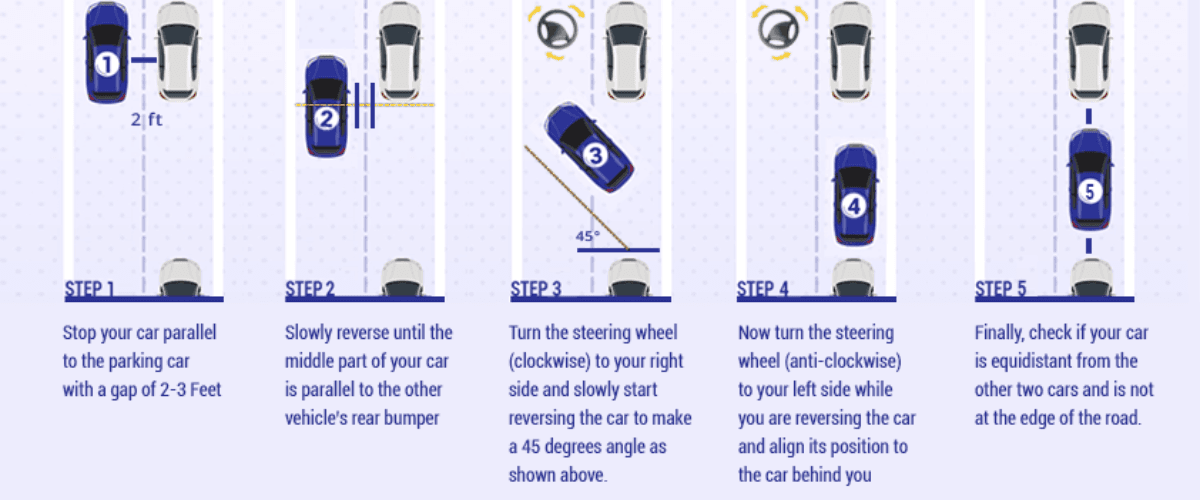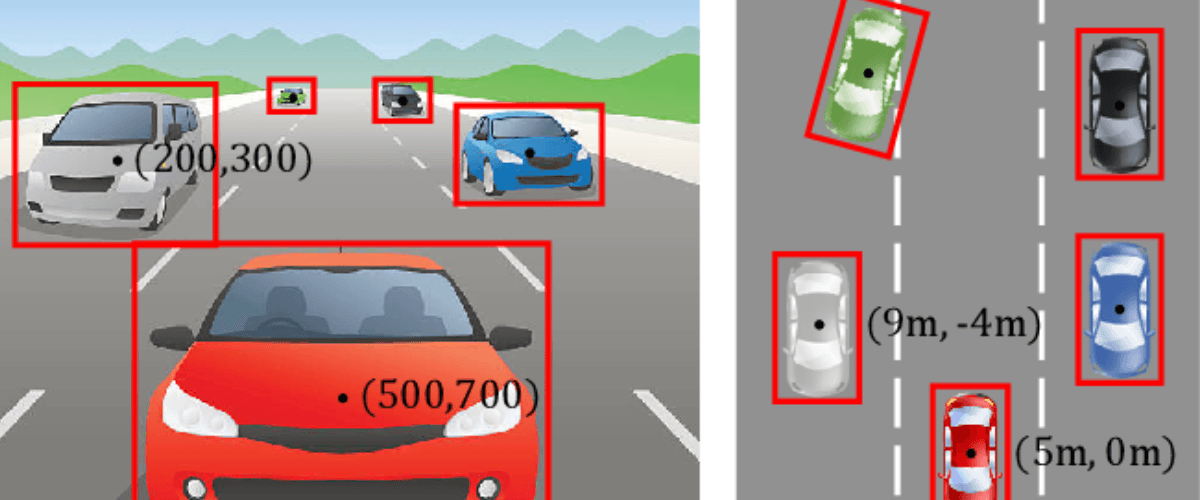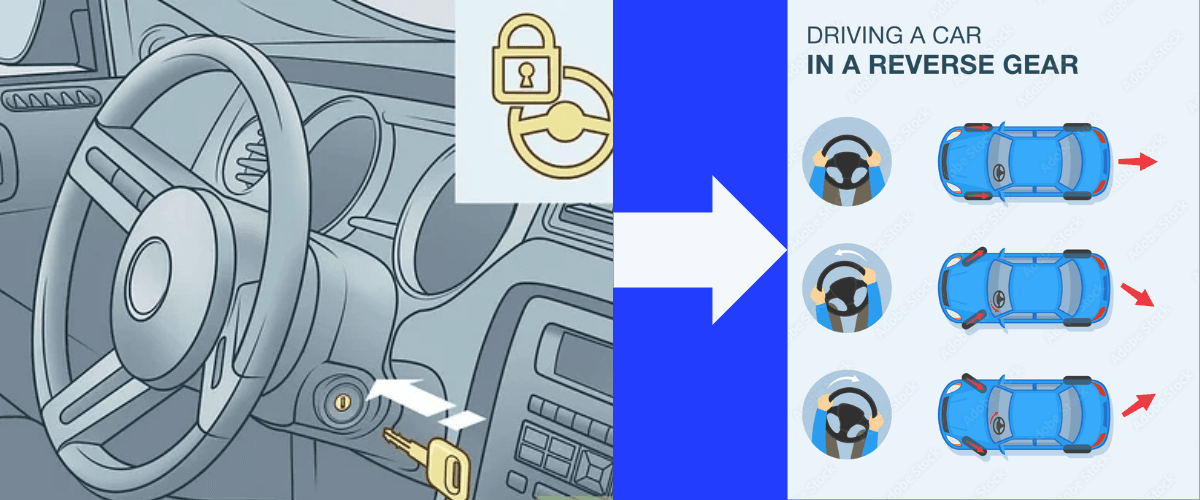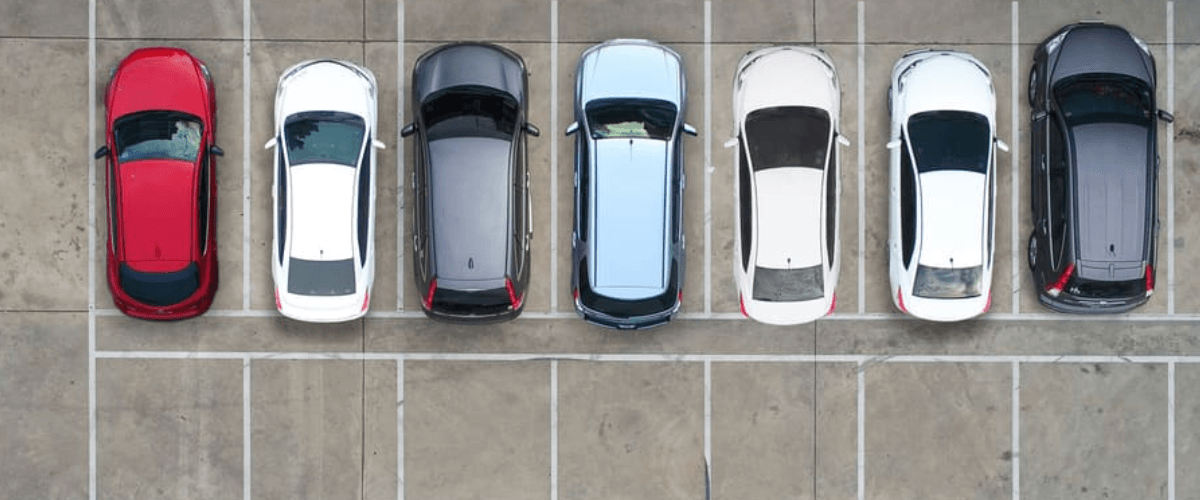

Parallel parking may not be easy as it is possibly one of the toughest parts of driving. You will be surprised to know that even the most expert drivers may have difficulties parking parallel, particularly in a congested city. However, do not worry as this article covers some handy parallel parking tips.
The most important thing to do is to find a proper space where your car can be parked safely and you can have complete peace of mind. You should initially start hunting a wider space till the time you are proficient in parking your vehicle in narrower spots. You should also watch out for big rocks, open gutters, or other hurdles before parking your car. After all, there might be a solid reason why a particular parking slot is free in a busy parking area while all others are filled up.

You need to estimate whether the vacant space can accommodate your four-wheeler or not. We suggest a minimum of 3 to 4 feet of space apart from the length of your car. Alternatively the space available should be 1.5 times the length of your car for comfortable parking. Once you have mastered the art of parking, you may try parking your vehicle in smaller spaces later on.
Let us now focus on how to do parallel parking perfectly?
1. Position the vehicle:
Ride up to your car till you reach next to the vehicle parked right in front of the parking lot. Align your vehicle in a way so that there is at least a distance of one arm between the two vehicles.

At the same time, this distance will also depend on your car's length, its turning radius, and the space available. Thus, an arm's distance is the minimum. Some people would advise aligning the car's rear wheels with the adjacent car's rearmost part.
There are others who would recommend you align your vehicle's mirror and that of the parked vehicle. You should do it in a manner so that the two are adjacent to one another from the point of view of the driver. Is the parking area spacious enough? In that case, you may also place the rare tires of your car beyond the other parked car's rearmost part to park comfortably.
2. Lock the steering wheel and begin reversing in
Your next step would be to make sure the steering wheel is locked before you begin reversing in. You need to remember that the parking spot has to be on the left. Therefore, lock your steering wheel to the left. You should do the reverse if it is on the right.
Check the mirrors; use the reverse gear before beginning to back. You have to also keep a tab on the vehicle at the back. You can do it using the IRVM while also keeping an eye on the car parked ahead.

We recommend you to look over the shoulder and towards where the vehicle is reversing. You can do so by shifting the seat and holding the side seat for the passenger for improved support. Continue to reverse until there is proper alignment from the car's front wheels to the front car's rearmost part. However, it might not be easy to assess this initially from the seat of the driver. Yet, keep an eye on the driver-side ORVM to see the front of the vehicle parked behind your car.
3. Straighten the vehicle:

It should be the third step for your parallel parking. Turn the steering wheel of the car into the center position. Continue reversing while your car's rear begins nearing the pavement. Your vehicle's nose should be clear of the car parked in the front. You should also keep an eye on the ORVM on the passenger side. It should be sufficiently tilted to view the surroundings. You need to observe the car parked in front while moving into the space behind it. Make sure that you maintain an adequate distance between the vehicle at the back and your car.
4. The final aligning of your vehicle:

We now come to the final step for impeccable parallel parking. When your vehicle is in the parking space, there could be a requirement to adjust the vehicle by straightening up the steering wheel. However, there are some indicators here. For instance, the licensed plate of the car before you is aligned to your windshield's center. Else, you might only see the rear car's parts through the ORVMs.
Additionally, turn back over the shoulder and look outside your car window to adjust the mirrors. You should do this to assess the space around the vehicle after parking it in the available space. You should not fret if you failed to park the vehicle straight on your first attempt. Rather, keep adjusting until you realize the car is aligned perfectly in the available space.
If you need to know more about parallel parking or if you need any info on cars in India, including self tech cars, check out our blog today.